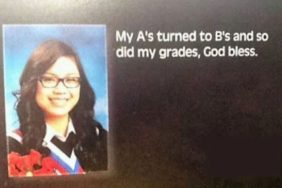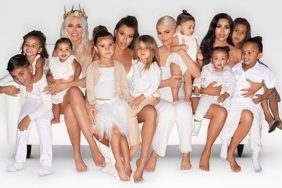Installation view of Quote Unquote at Anat Ebgi Gallery.
In our postmodern world, one’s identity is fragmented. Quests for the “real” or “authenticity” come off as laughable if posed within the context of art making. Amie Dicke’s solo show Quote Unquote at Anat Ebgi Gallery has a certain air of embracing mediated constructions of the self. In order to search for realness, however, it’s important to define it. In Baudrillard’s book Simulations, he writes: “The very definition of the real has become: that of which it is possible to give an equivalent reproduction . . . The real is not only what can be reproduced, but that which is always already reproduced: that is, the hyperreal . . . which is entirely simulation.” Much of Dicke’s investigations have to do with the visual redundancies, voids and the metaphorical meanings assigned to objects, making this a fun show for the cerebral thinker, or for one who thinks there’s such a thing as “real” in relation to visual art.

Amie Dicke, “Split Self” (2016).
Naturally, “Split Self” is one of the more central pieces in this show. It is two images of one woman’s face divided in the middle, a space in between, and then framed separately. In an awkwardly literal move, she splits the photo into two, and also removes the entire middle of the woman’s face. Her physiognomy is a question; she has no nose, mouth or chin, and only the corners of her eyes are visible. This same question is echoed by a sculpture that sits across from it, entitled “Split Stone” (2016), which consists of two stones laying next to each other; it’s either one cut in half or two arranged adjacent each other. That mystery is left to the viewer.

Amie Dicke, “Space Bars” (2016)
In the piece “Space Bars 1” (2016), Dicke lines up five typewriter space bars — four black and one aquamarine — framing them together into one long line. This is metaphorically a “quote unquote” space, or rather a series of bars that are intended to create space in a document. Here Dicke demonstrates the playful difference between an object used to create space in a document, and actual physical space in the work of art. That said, there’s nothing really ‘real’ about this piece, other than the ways that the space bars themselves create a new type of space in the work of art itself. In a similar visual trick, one notices that the shape and arrangement of the space bars are very similar to the crayons in “Crayons 1” (2016), a rectangular piece that’s simply a vertical arrangement of crayons sans labels. The crayons take up the entire framed space, whereas the space bars create more space within the frame.

Amie Dicke, “Ink and Smoke” (2016)
Dicke plays with space in similar ways elsewhere, as in the black-and-white photograph “Ink and Smoke” (2016), where we see the right and left hands of a woman, her face scratched out. In her left hand, she holds a lit cigarette, and in her right hand, she lightly holds a pen. Essentially, the space that Dicke creates in this image is for the objects, not for the human. In these types of images, Dicke succeeds in her subtle use of metaphor and object. Other pieces like “Red Ink” (2016), which is entirely bic ink on plexi, and the diptych photograph “Necks” (2016), come off as a bit too literal. Dicke directly engages with repetition and mediated images in the piece “One Image, One Cartridge” (2016), a print out of the same image — a man with his head in his hands. She prints this image over and over again, demonstrating its reproducible quality, until the ink cartridge offers only blue ink. This random stock image has been maximized to its full reproducibility. It becomes “real,” according to Baudrillard’s definition of the real in Simulations.

Amie Dicke, “One Image, One Cartridge” (2016)
There’s a pleasant overlap to all of the pieces in this show, giving a consistent flowing quality to all of the work present. “One Image, One Cartridge” (2016) ends with blue ink; elsewhere in the show, there’s a piece called “Blue Ink” (2016). It suggests both the endings of that cartridge, and the actual work itself. Rather than go on a quest to try and find the ‘real’ or ‘authentic,’ Dicke lets the paintings and sculptures speak for themselves, allowing the conceptual work to flow and continue until it reaches its natural endpoint rather than demonstrate its supposed “realness.”







